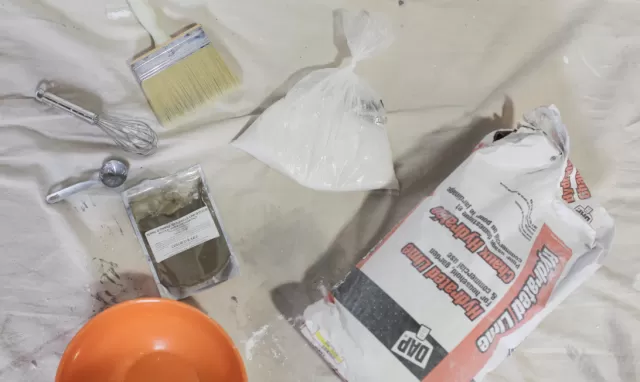Over the last year, limewash paint has become increasingly popular, appearing in magazines, on Instagram, and even in the bathrooms of trendy bakeries.
The textured, plaster-like appearance of limewash paint has always intrigued me, but I’ve been too intimidated to attempt the technique myself. However, it turns out that DIY-ing limewash painting is indeed possible, though it may require a bit more effort than applying traditional paint.
Designer Whitney Lee Morris, author of Small Space Style, recently tackled a limewash painting project in her own home. As a first-timer, Morris appreciated the low-toxicity and aesthetic qualities of the paint, finding the application process relatively simple. “Lime paint is an impactful way to attain the type of beautiful, rich patina that old homes develop over time,” she notes.
While limewash painting dates back centuries, the trend has seen a resurgence in recent years. To learn more about this technique, I spoke with Morris and other design professionals to gather their best advice on achieving the desired rustic finish. The following guide contains all the necessary tools, tips, and tricks for successfully limewashing your walls.
Morris also recommends using the same size of brush for the entire project. “If you start with a 5-inch, finish with a 5-inch,” she says. “Otherwise, the varying strokes will look truncated.” Likewise, if you’re painting with a helper, make sure to use identical brushes.
Cha
Prepping Your Walls for Limewash Paint: Tips and Tricks

Before you begin applying limewash paint to your walls, it’s important to properly prepare them.
After priming and taping, it’s time to mix your limewash paint. As mentioned earlier, it’s important to stir the paint regularly to ensure an even consistency. Once the paint is well mixed, dip your brush into the paint and begin applying it to the walls in a loose, freehand style. Keep in mind that limewash paint will appear much lighter when it’s wet, so don’t worry if it looks too light at first.
As you work, it’s important to maintain a wet edge, which means overlapping the areas you’ve just painted while the paint is still wet. This will help you avoid visible lines or overlaps when the paint dries.
After you’ve finished applying the first coat, allow it to dry completely before applying a second coat. Depending on the brand and the desired look, some professionals recommend applying anywhere from two to four coats of limewash paint.
Once you’re done painting, remove the tape and admire your handiwork. Limewash paint has a unique, rustic look that adds character and warmth to any space.
Choosing the Right Brush for Limewash Painting

When using limewash paint, it’s important to apply it freehand with a brush rather than a roller.
According to Casey Keasler, founder and designer of Casework, using a brush for large areas can be tiring, so it’s important to invest in the best quality wide flat brush you can afford. Whitney Lee Morris, author of Small Space Style, also advises using the same size brush for the entire project to avoid varying strokes.
If working with a partner, make sure to use identical brushes for consistent results.
How to Mix Limewash Paint

Proper mixing is key to achieving a successful limewash paint job.
As limewash paint settles quickly within the can or tray, it’s important to stir it every few minutes to ensure even consistency. Whitney Lee Morris, who recently used limewash paint in her home, emphasizes the importance of even mixing throughout the process, warning that failure to do so can result in uneven patches of wall.
Watch a Pro Do It First

If you’re new to applying limewash paint and its loose, freehanded style, experts recommend watching a video tutorial first.
Casey Keasler, founder, and designer of Casework, watched Portola Paint’s online tutorials before painting her bedroom. She found the videos to be incredibly straightforward and helpful.
A quick YouTube search for “limewash paint tutorials” will provide a wealth of helpful videos, including time-lapse demonstrations of the process.
*The information is for reference only.